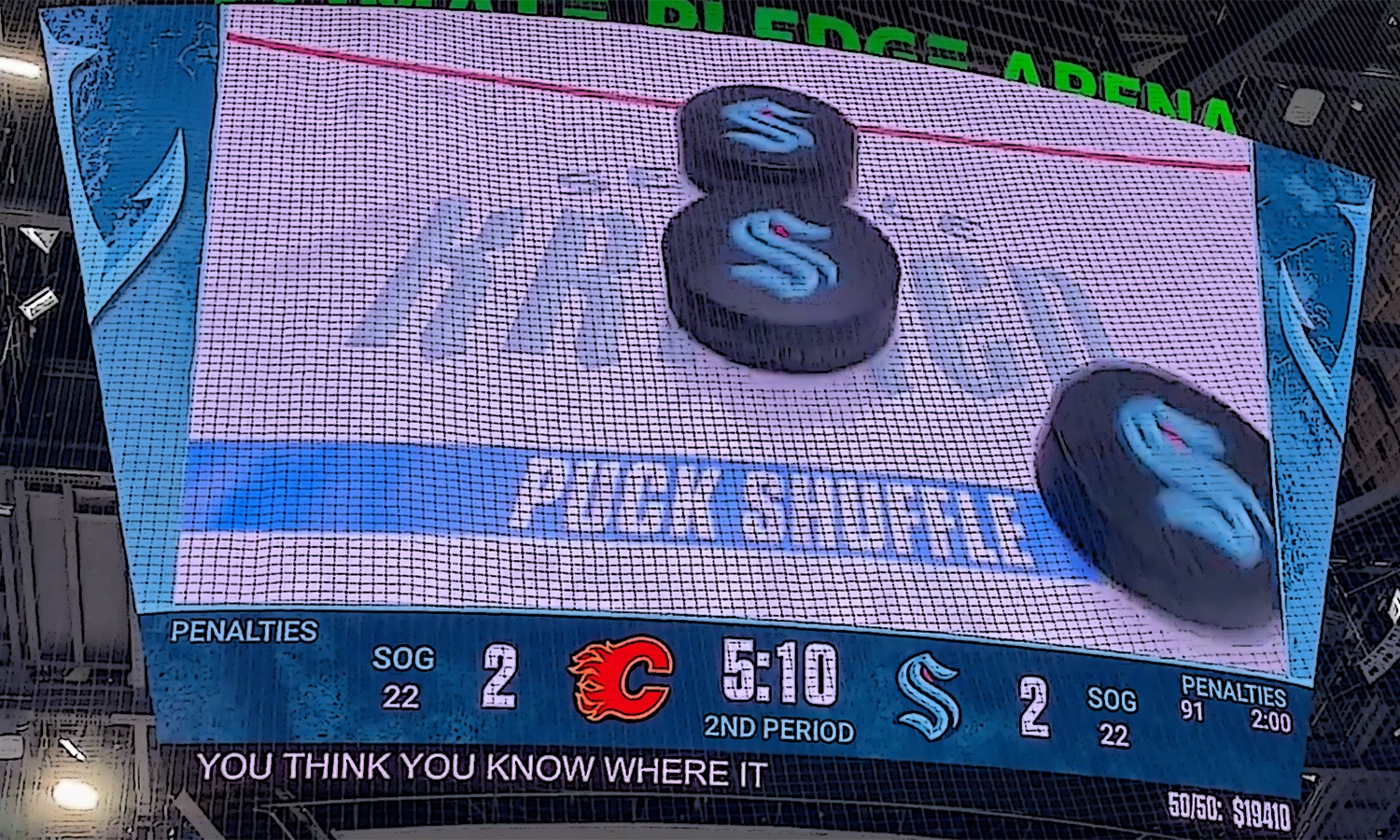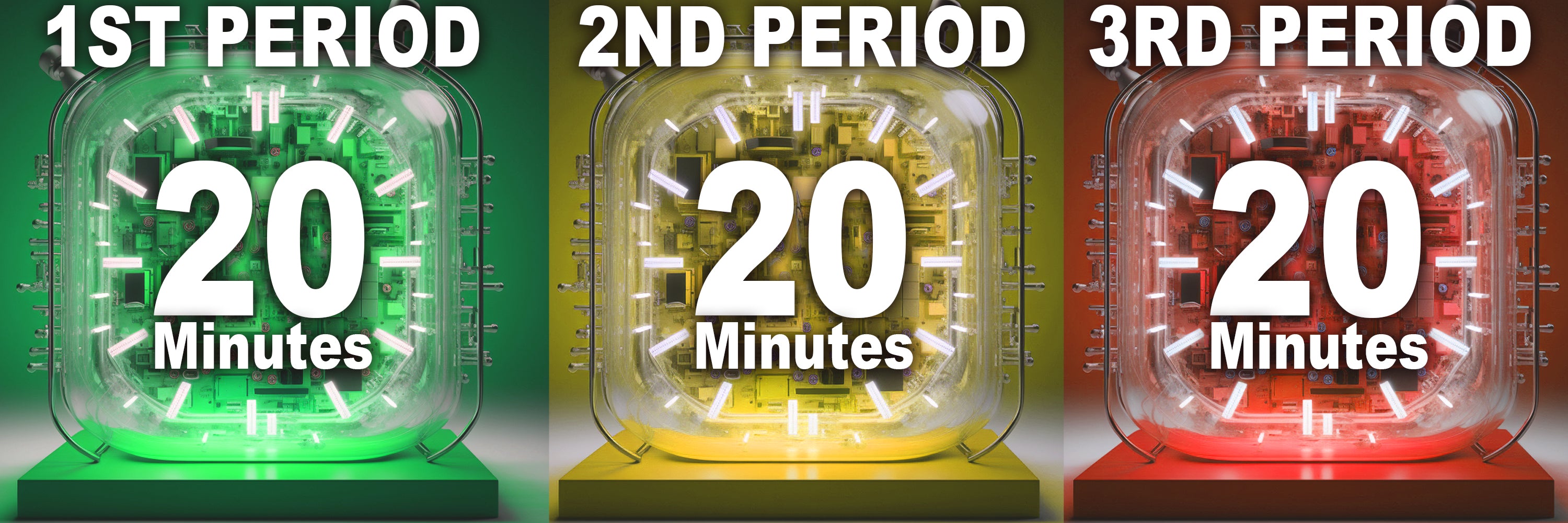How Many Periods in Hockey? Hockey has three periods. Each period lasts 20 minutes.
Hockey is a fast-paced, exhilarating sport enjoyed by many around the world. The game consists of three periods, each lasting 20 minutes. These periods allow for intense, uninterrupted action, keeping fans on the edge. Unlike other sports with continuous play, hockey’s structure ensures high-energy gameplay.
Players give their all during these periods, making every second count. Understanding the period structure is essential for both new fans and seasoned enthusiasts. This format contributes to the sport’s unique rhythm and excitement. The three-period system defines the hockey experience, whether you’re watching or playing.
The Basics Of Hockey Timekeeping
Hockey is a fast-paced sport. Understanding the timekeeping rules is essential. The game is divided into periods, and there are specific rules for managing the clock.
Breaking Down Game Duration
A standard hockey game consists of three periods, each lasting 20 minutes. Intermissions, which are usually 15 minutes long, break between periods.
Here’s a simple breakdown:
| Period | Duration |
|---|---|
| First Period | 20 minutes |
| Second Period | 20 minutes |
| Third Period | 20 minutes |
Clock Management And Stoppages
Hockey’s clock management is unique. The clock stops for specific reasons. These include:
- When a goal is scored
- When a penalty is called
- When the puck leaves the playing area
During stoppages, players can rest and strategize. This keeps the game fair and exciting.
Credit: www.pinterest.jp
Periods In Professional Hockey
Hockey games are divided into segments called periods. These periods help structure the game and create exciting intervals. Different leagues have different rules for periods.
Nhl And International Standards
The National Hockey League (NHL) has three periods. Each period lasts 20 minutes. There are breaks between each period. These breaks allow players to rest and strategize.
International hockey follows similar rules. The International Ice Hockey Federation (IIHF) also uses three periods. Each period is 20 minutes long. The rules are quite similar to the NHL.
Comparing League Formats
Not all leagues have the same format. Some minor leagues may have different rules. Let’s compare a few:
| League | Number of Periods | Period Length |
|---|---|---|
| NHL | 3 | 20 minutes |
| IIHF | 3 | 20 minutes |
| Junior Leagues | 3 | 20 minutes |
| Minor Leagues | Varies | Varies |
Minor leagues may have shorter periods. They might also have fewer periods. These changes help keep the game manageable for younger players.
Understanding the number of periods helps fans enjoy the game more. Knowing the rules can make watching hockey even more exciting!
Intermissions: Purpose And Activities
Hockey games are divided into three periods. Between these periods, there are intermissions. These breaks serve important purposes. They are not just for the players, but also for the fans.
Zamboni Time: Ice Resurfacing Explained
During intermissions, you will often see a Zamboni on the ice. This machine resurfaces the ice. Smooth ice is crucial for the game. The Zamboni shaves off the top layer of the ice. It then sprays a thin layer of water. This water freezes quickly, creating a smooth surface. This process takes about 15 minutes. Fresh ice ensures better puck movement and safer skating.
Behind The Scenes: Player Recovery And Strategy
Intermissions are crucial for player recovery. Players head to the locker room. Here, they rest and rehydrate. They may also get medical attention if needed. Coaches use this time to discuss strategies. They review the first period’s performance. Adjustments are often made to improve gameplay. This time helps players prepare mentally and physically for the next period.
Intermissions are also a time for fans to relax. They can get snacks or visit the restroom. Some arenas provide entertainment during the break. This can include mini-games or performances. Intermissions keep the game exciting for everyone involved.
Credit: www.gaimday.com
Overtime And Sudden Death
Overtime in hockey is thrilling. It starts after regulation time ends in a tie. This period decides the winner in a very exciting way.
Regulation Time Tiebreakers
During regular season games, overtime lasts five minutes. Teams play with fewer players, usually three-on-three. If no one scores, a shootout follows.
Each team selects three players. They take turns trying to score against the goalie. The team with the most goals wins the game.
Playoff Overtime Dynamics
Playoff overtime rules differ. There are no shootouts. Teams play sudden death overtime periods until someone scores.
Each overtime period is 20 minutes. Teams play five-on-five, just like in regulation time. The first team to score wins immediately.
| Overtime Type | Duration | Players | Outcome |
|---|---|---|---|
| Regular Season | 5 minutes | Three-on-three | Shootout if no goal |
| Playoffs | 20 minutes | Five-on-five | Sudden death |
Tips For Understanding Overtime
- Overtime is exciting and fast-paced.
- Regular season overtime involves fewer players.
- Playoff overtime can last many periods.
Fans love the excitement of overtime. It adds suspense and drama to the game. Understanding these rules makes watching hockey even more fun.
The Role Of Periods In Game Strategy
Hockey is divided into three periods. Each period plays a crucial role in the game’s strategy. Coaches and players plan their moves according to the period they are in. This ensures they maximize their chances of winning. Let’s explore how each period shapes the game’s strategy.
First Period: Setting The Tone
The first period is all about setting the tone. Teams want to start strong. They use this time to test their opponent’s defense. Quick goals in the first period can demoralize the other team. Coaches encourage aggressive play and quick shots. Players aim to gain an early advantage.
Second Period: Exploiting The Long Change
The second period presents a unique challenge. The teams switch sides, causing a longer change between shifts. This can tire players. Coaches plan to exploit this “long change” by pressing their attacks. Fresh legs on the ice are crucial. Smart line changes can create scoring opportunities.
Third Period: Defending Leads And Late Pushes
The third period often determines the game’s outcome. Teams with a lead focus on defense. They aim to protect their advantage. Coaches instruct players to play conservatively. Players stay alert to avoid penalties. Teams trailing behind make late pushes. They take risks to score goals. This period is about endurance and smart play.
Credit: hockeyportraits.com
Youth And Recreational Hockey Variations
Youth and recreational hockey leagues often adjust the number of periods and their length. These variations help players develop skills and ensure games fit into schedules. Understanding these adjustments can enhance your experience in youth and recreational hockey.
Adjusting Period Lengths For Development
Youth leagues sometimes shorten the length of each period. This helps keep young players engaged and focused. Shorter periods can also reduce fatigue, making the game more enjoyable.
- For players under 8, periods might be 10 minutes long.
- For players aged 9-12, periods could be 12 minutes long.
- Older youth players might have 15-minute periods.
These adjustments ensure players can perform well without getting too tired. Shorter periods allow more frequent breaks, which can be crucial for young athletes.
Tournament Play: Modifying Periods For Scheduling
In tournaments, organizers often modify period lengths to fit more games into a day. This ensures each team gets to play multiple games. Shortened periods help keep the tournament on schedule.
| Age Group | Period Length | Reason |
|---|---|---|
| Under 10 | 10 minutes | More games per day |
| 10-12 | 12 minutes | Balanced play and rest |
| 13-15 | 15 minutes | Maintain skill level |
Modifying periods in tournaments helps keep the pace steady. This approach allows for fair competition and ensures all teams get equal playtime.
Historical Evolution Of Game Timing
The game of hockey has seen many changes over the years. The timing of the game is one such area. Initially, there were no defined periods. The game evolved, and the structure we know today was established.
Origins Of The Three-period Structure
In the early days of hockey, matches were played in two halves. Each half lasted 30 minutes. Players often became very tired. This led to the idea of splitting the game into three periods.
Frank and Lester Patrick were pioneers in this change. They proposed three 20-minute periods. This new structure allowed players to rest more. It also made the game faster and more exciting.
Changes In Period Lengths Over Time
Initially, the length of each period was not fixed. Over time, the NHL standardized the game. Three 20-minute periods became the norm. This structure allowed for better player performance and game flow.
Before this, some leagues experimented with different lengths:
| League | Period Length |
|---|---|
| Early NHL | 2 x 30 mins |
| Western Canada Hockey League | 3 x 20 mins |
Today, the three-period structure is standard worldwide. This evolution has greatly shaped the modern game of hockey.
Hockey Timekeeping Technology
Hockey is an exciting sport with fast-paced action. Accurate timekeeping is crucial. Advanced technology ensures fairness and precision during games. Let’s explore the world of hockey timekeeping technology.
Scoreboards And Timekeeping Systems
Modern hockey arenas use digital scoreboards. These display real-time scores and game time. They are visible to all players and fans. The scoreboard shows periods, goals, and penalties.
Timekeeping systems are linked to the scoreboard. These include precise clocks and timers. Officials control the time from a central console. This ensures synchronized and accurate timekeeping.
| Feature | Description |
|---|---|
| Digital Display | Shows real-time scores and time |
| Central Console | Controlled by officials |
| Synchronization | Ensures accurate timekeeping |
Innovations In Time Tracking And Management
Recent innovations enhance hockey timekeeping. Wireless technology allows remote control of timekeeping devices. This reduces errors and improves accuracy.
Advanced software manages game time efficiently. It integrates with other systems. For example, it can link with goal detection systems. This ensures precise recording of goals and penalties.
Here are some key innovations:
- Wireless Timekeeping: Remote control of devices
- Advanced Software: Efficient game time management
- Integration: Links with goal detection systems
These innovations make hockey timekeeping more reliable. They ensure fair play and enhance the viewing experience.
Frequently Asked Questions
Is There 3 Or 4 Periods In Hockey?
Hockey has 3 periods. Each period lasts 20 minutes. Overtime periods may be added if the game is tied.
Is There A 4th Period In Hockey?
No, hockey has three periods. If the game is tied, it goes into overtime, which is not a fourth period.
Why Does Hockey Have Three Periods?
Hockey has three periods to allow players rest and maintain high energy levels. This structure also enhances game strategy and excitement.
How Many Periods Does Nhl Hockey Have?
NHL hockey has three periods. Each period lasts 20 minutes. There are breaks between periods.
Conclusion
Understanding the structure of hockey periods enriches your game appreciation. Each game consists of three periods, enhancing strategic play. Knowing this helps fans and players alike. Keep this in mind during your next match, and enjoy the excitement of every period.
Stay tuned for more hockey insights and tips.







